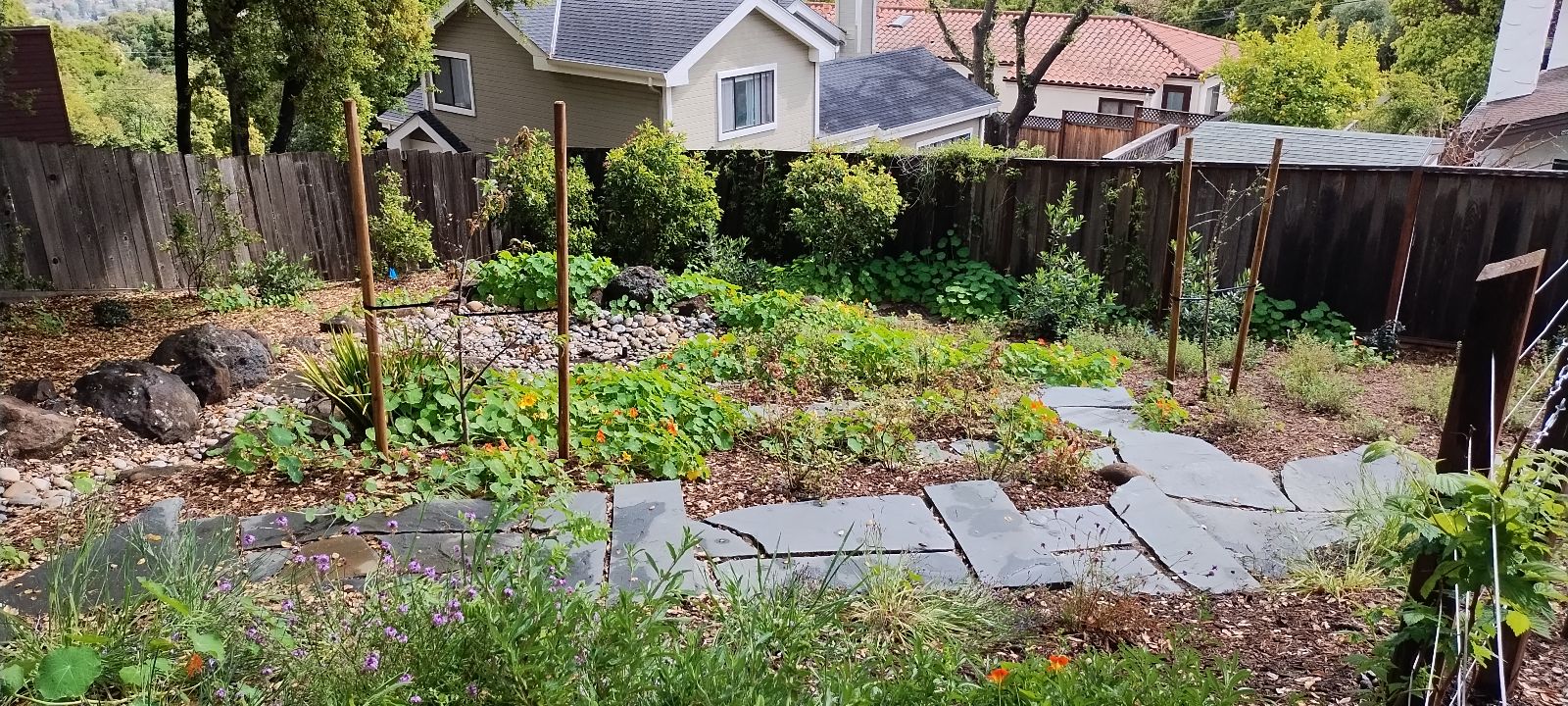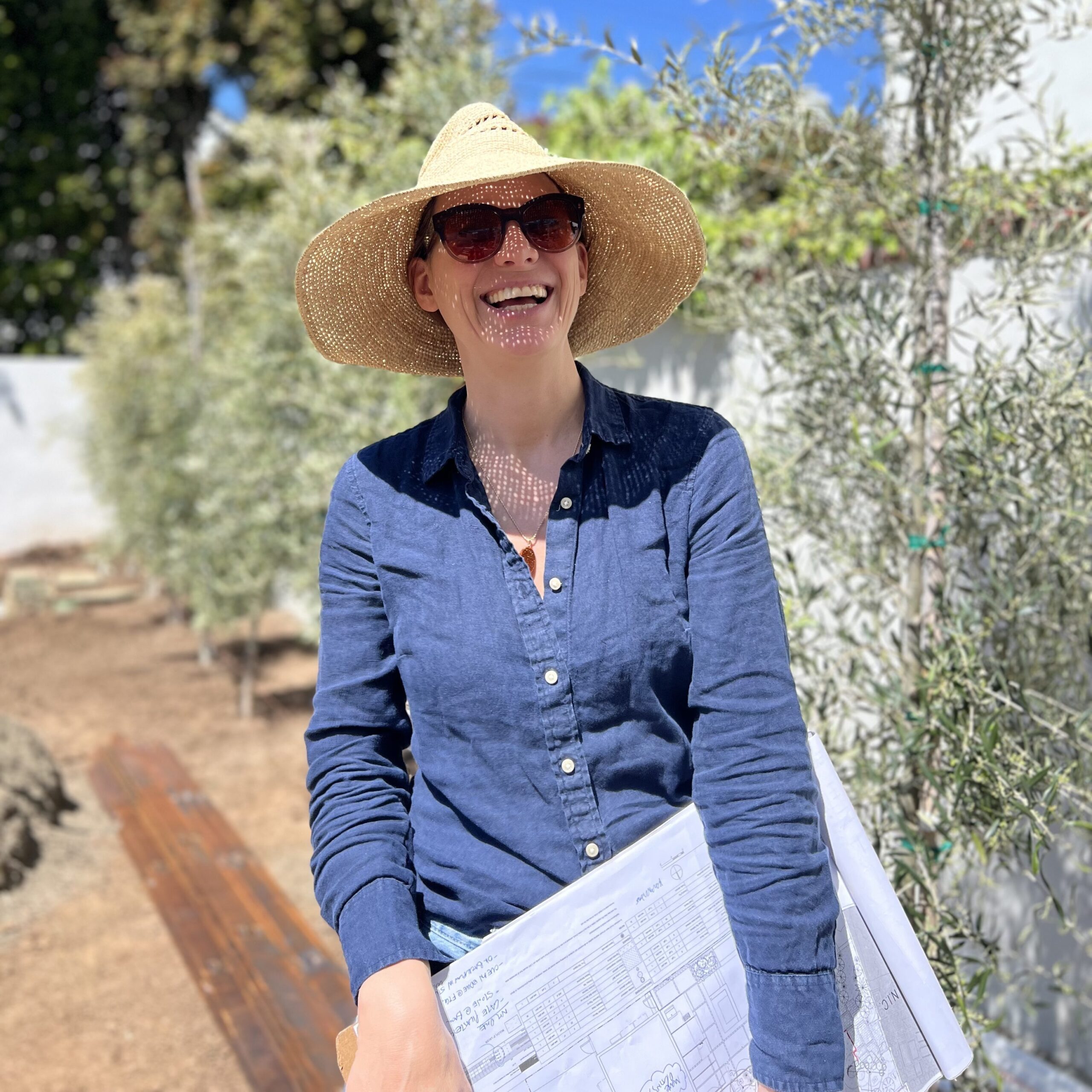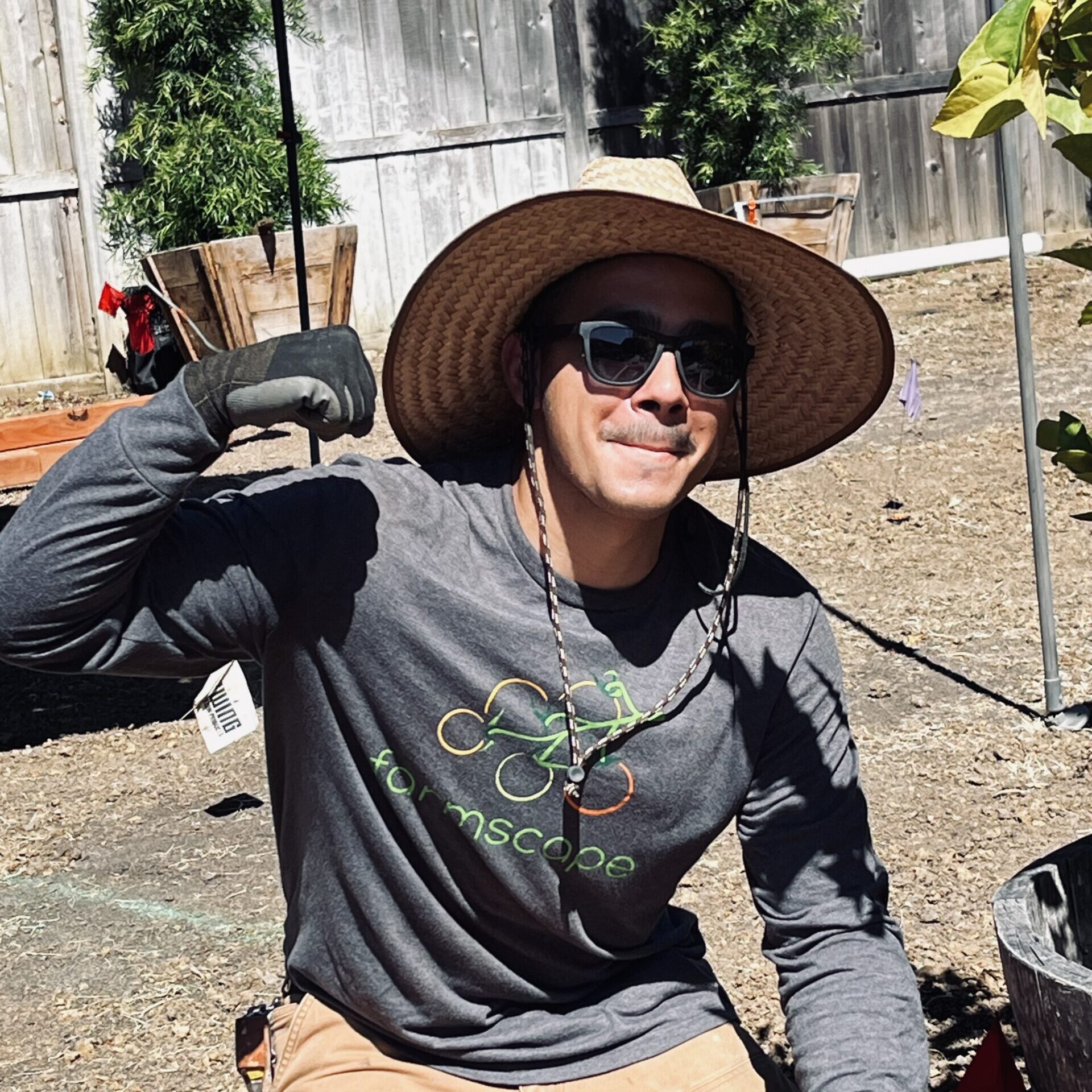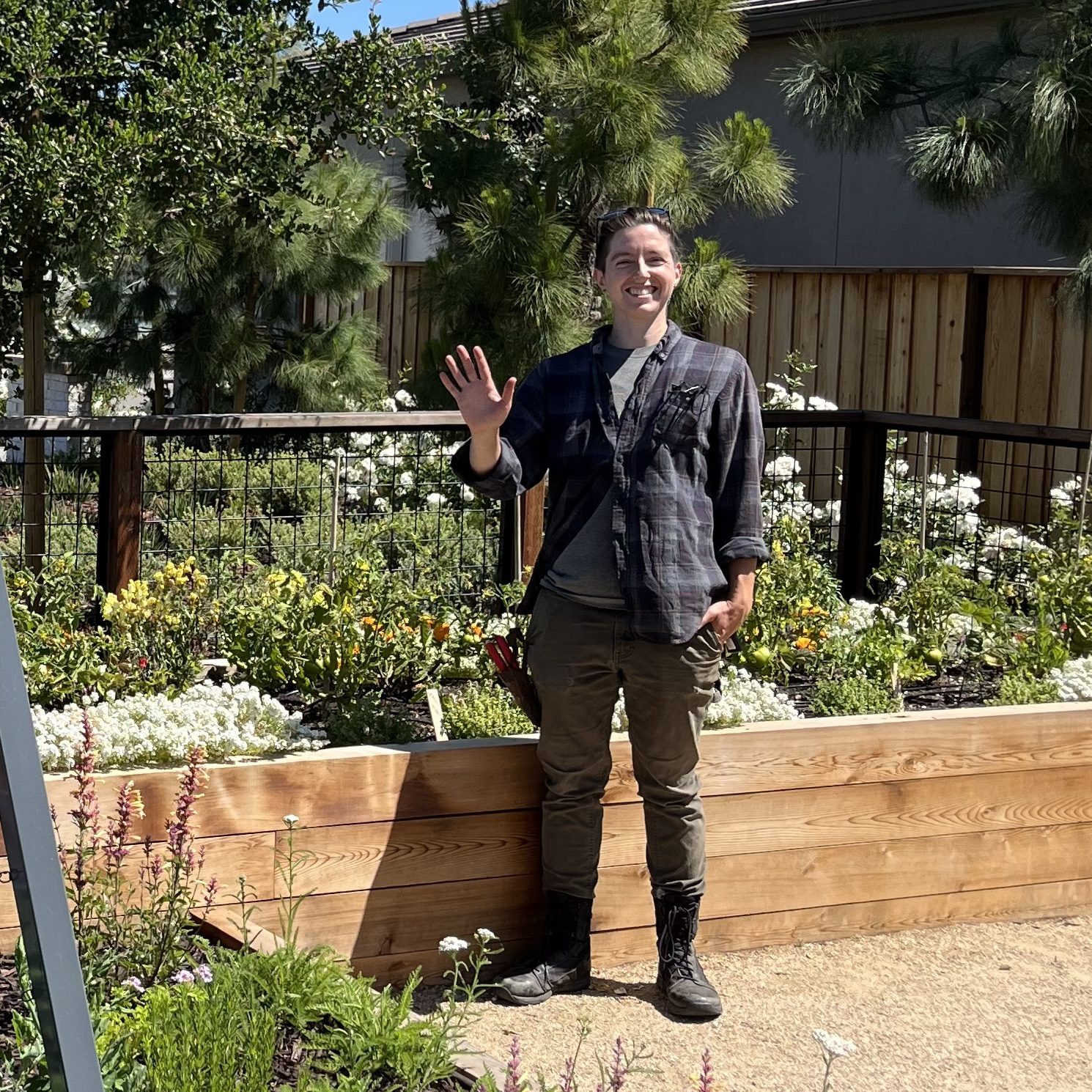Emerald Hills Homestead: Design-Installation-Maintenance
A dream project in Northern California with big, open views of the San Francisco Bay, surrounded by very mature Quercus agrifolia (oak trees). This project features all of our favorite elements, including orchard trees and native plants.

DESIGN PROCESS
The site was a blank slate: a large hillside property next to a well-designed modern home. The clients wanted a full Farmscape scope, with an emphasis on low-maintenance pathways, areas for their kids to explore and plenty of citrus and stone fruit trees. From there, we developed a few design schemes. Initially, the site was overrun with thistle and weeds. Despite having drawings of the property, it was hard to know what was below the overgrowth. So, the Install team did a thorough assessment and cleanup to better understand the site conditions.

The property is on a southeast-facing slope, which limits afternoon sun. We identified the best spot for the vegetable garden based on optimal sun exposure, and the rest of the garden was planted with native species from the local oak woodland plant community. The colorful red aluminum planters are free-draining and balance the neutral color palette used on the rest of the house. In the photos, you can see an existing curved wall that required precise measurements to ensure the planters fit perfectly into the arches.
– CATHERINE MCLAUGHLIN
INSTALLATION PROCESS
The property was really pretty, even when it was overrun with weeds. The install process was fairly straightforward until we started laying the flagstone, which was challenging. The clients wanted the stone to look as natural as possible, requiring a different process than what I was used to. We used a chisel and hammer to give the flagstone a natural look. Sometimes you can do everything right, but the stone might break off in the wrong way. When this happened, we’d step away, take a breath and try again.
This was the most challenging part of the job and ended up being a highlight for me. I really enjoy this type of stonework now. When we went back a month ago, everything had grown into itself, and I’m really happy with how it turned out.
– ALEX CABALLERO

MAINTENANCE PROCESS

Maintenance has been pretty straightforward now that we’re settled in, but we spent a lot of time our first winter season on weed suppression and pest management, as the oxalis and aphids thrived in the rainy and wet conditions. The native clay soil has also held on to much of that moisture, especially in the low points of the landscape where water tends to drain to, and we’ve had to be careful in our water management not overwater even as temps have been rising into the 80s and low 90s during the summer. We’ve been combatting this challenge with more frequent and shorter run times in the irrigation to keep the shallow-rooted plants watered without adding to the moisture sitting several more inches below the soil.
I really enjoy how even as challenges change and develop throughout the seasons, so too does the landscape and wildlife on the property. The rainy winter brought with it weeds and pests but also an array of fungal life and edible mushrooms. And as we pulled away the weeds in the spring, we found junco nests hidden in the brush. There are always things to enjoy, even in the struggle!
– BO GOULD
We loved working on the Emerald Hills Homestead, a project that shows our seamless Design-Install-Maintenance services in action. From the very start, our teams worked hand in hand to create a vibrant, thoughtfully designed and still evolving space — a win for our clients and the local ecosystem!
Learn more about this project on our project page, or contact us today to learn more and discuss your dream garden.



